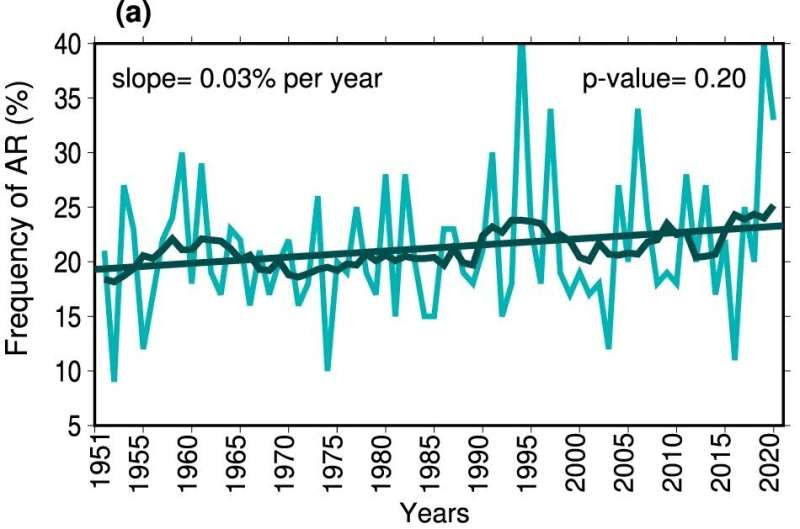A team of atmospheric scientists from the Indian Institute of Technology and the University of California, has found that the number of atmospheric rivers associated with flooding in India has been rising as the planet continues to grow warmer.
In their paper published in the journal Communications Earth & Environment, the group describes how they analyzed data from multiple sources to track the number of atmospheric rivers affecting India and how it has led to increased flooding in that country.
Atmospheric rivers (ARs) have been in the news of late due to several of them that caused flooding in California this past winter. But ARs do not impact just the US, they can form and cause increased amounts of rain in many parts of the world. In this new effort, the research team sought to learn more about the impact of ARs on India—a country well accustomed to annual flooding during the monsoon season.
ARs are channels of moisture-laden air. They form when air pressure systems collide, pushing air with a lot of moisture in a stream-like fashion through the atmosphere. As they grow in size, they become similar to rivers flowing across the sky. When they meet land, the air pressure relents, allowing the moisture to be released, quite often in dramatic fashion.
In this new effort, the researchers team examined weather records from the European Reanalysis Version, the Dartmouth Flood Observatory and the India Meteorological Department for the years 1951 through 2020 looking for evidence of ARs that have had an impact on India, most particularly during monsoon seasons.
In so doing, they found AR events impacted the country 596 times, 95% of which occurred during a monsoon season. They also found that 54% of the biggest AR events occurred over the past three decades, suggesting they are not only forming more often but are getting bigger as the planet grows warmer.
The researchers note that warmer ocean surface temperatures over parts of the Indian Ocean have led to more evaporation, which in turn has led to more rain when ARs form. The increase in rain amounts has led to massive floods which have destroyed property and killed thousands of people.



Recommended Comments
There are no comments to display.
Join the conversation
You can post now and register later. If you have an account, sign in now to post with your account.
Note: Your post will require moderator approval before it will be visible.